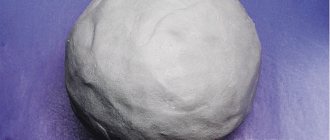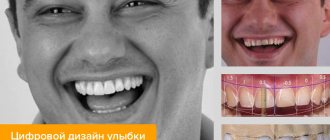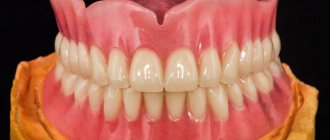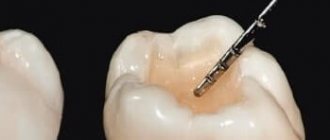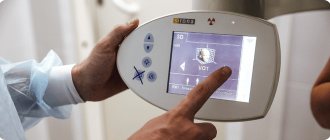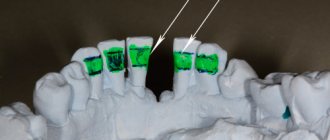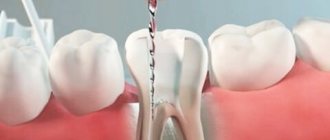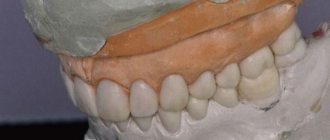Have you decided to install veneers or crowns, but have doubts about the ideality of the final result? Then use the wax modeling service and visually evaluate the beauty of your future smile, even before the manufacture and installation of a permanent denture.
Using innovative Wax-up and Mock-up technologies, dental laboratory specialists will create an accurate mock-up of a permanent structure and demonstrate its convenience to the patient. If necessary, technical adjustments will be made to correct the shape and size of individual teeth. And only after this, in accordance with the planned plan, the final version of the implants will be manufactured.
What is Wax-up technology?
Wax-up is a modern technology for modeling your smile. With its help, even before installing veneers or crowns, you can see the changes in teeth that will occur after their installation. The innovation makes it possible to eliminate possible deficiencies and imperfections and change the shape of teeth even before they are installed.
Despite many advantages, this technology also has its disadvantages:
- The prosthetic design allows you to evaluate the position and shape of the new tooth. At the same time, it is impossible to determine whether the shade of the new enamel is exactly right;
- The Wax-up model does not allow you to determine the range of possible chewing movements.
Advantages and disadvantages of the wax modeling method
Creating a diagnostic wax-up has many benefits beyond making your dentist's job easier and knowing what your smile will look like after a dental restorative procedure. This is a process similar to what any skilled person, such as an architect or automotive designer, would use as a working model before starting to create the final product.
Below are some facts about wax-up models and why they are considered one of the most innovative innovations in diagnostic dentistry.
- The method is used to visualize the result of a dental procedure, increases its predictability and simplifies the preparation of an effective treatment plan.
- Wax-up helps convey important information. This method is used by a dentist, orthodontist, or oral surgeon to send important information to the laboratory technician who will perform the prosthesis.
- The Wax-up gives the patient an idea of what their smile will look like after the dental procedure. The diagnostic procedure also provides the opportunity to adjust the result according to the desired result during the creation of the final restoration.
- The wax model is used by the dentist to create and test dentures. This helps the technician ensure that the structures are operating effectively before installing them.
- A wax-up model made using digital scans will not only speed up the dentist’s work, but will also improve the accuracy of the result due to improved communication with the dental laboratory.
The only disadvantages of using this technology are the need to visit the dental office multiple times and the increased cost of treatment.
The aesthetic component of dental treatment plays an important role, especially in situations when it comes to complex interventions (veneers, lumineers, implant prosthetics, crown restoration). Wax-up modeling is a technique that allows the doctor to be not just a dentist, but also in some way an artist, which helps create the most natural, neat and beautiful smile.
When are Wax-up and Mock-up needed?
Doctors may recommend performing one of the presented technologies if the patient has bite distortions, as a result of which increased tooth wear. Also, the procedure may be required to restore one or more teeth. In cases where the patient has problems with the joints. The procedure is appropriate for:
- Restoring a completely destroyed tooth;
- Restoration of a whole range of teeth;
- For aesthetic restoration of teeth in the smile area.
Wax modeling technique
The implementation of the technique includes 3 stages:
- Assessment of the condition of the oral cavity. At this stage, additional diagnostics can be carried out, for example, an orthopantogram, and treatment of various diseases (periodontitis, dental caries, etc.). Modeling is possible only after complete sanitation of the oral cavity.
- Making dental impressions. To do this, the patient needs to bite down on a dental tray made of silicone material.
- Based on the copies received, the dental technician creates copies of the patient’s jaws in the laboratory, after which the final result of the planned treatment is simulated.
What is Mock-up
This technology gives the patient the opportunity to appreciate the beauty of the restored smile and chewing teeth even before the prosthetic structure is made.
Advantages:
- Such structures made using Mock-up technology make it possible not only to immediately evaluate the visual effect of future prosthetics, but also to use temporary structures until permanent ones are made.
- While wearing temporary Mock-up structures, the patient can make adjustments until the permanent form is made.
- Using this technology, the doctor can make a prosthesis with an ideal fit.
Computer design of a “new” smile
A modern dentist is not only a photographer, but also a designer.
To make a smile beautiful and harmonious, the doctor must take into account many nuances, which we describe in detail in the article There are more and more beautiful smiles.
Watch how, using the Digital Smile Design program, the doctor analyzes the proportions of the face, adjusts the size and shape of the teeth so that the “new” smile looks beautiful and harmonious.
Computer modeling allows the doctor, together with the patient, to evaluate several smile options and choose the most suitable one.
The next stage: making models of teeth, and then trying on a “new” smile.
Mock-up stages
- The doctor makes a wax model of future teeth, taking into account the patient’s wishes.
- After making the wax, plaster impressions are created.
- No enamel grinding is needed for this technology.
- The plastic is placed into a silicone model and placed on the patient’s natural teeth.
- After removing the silicone, a temporary plastic structure remains in the oral cavity.
In cases where a patient comes to the doctor with complex oral problems, the installation of structures can be carried out in several stages. The patient needs some time to get used to the new forms, to evaluate how comfortable they sit, and whether they cause inconvenience when chewing food or talking. After which, the doctor evaluates the quality of the impression made, including based on the patient’s complaints. Decides whether future restoration can solve existing imperfections.
Indications
The main indications for wax modeling are:
- performing indirect prosthetics;
- restoration of aesthetics;
- production of structures such as lumineers, veneers, bridges or conventional crowns;
- excessive abrasion of enamel;
- anatomical features of the jaw that require detailed modeling;
- destruction of the supra-root area, especially with advanced caries;
- the enamel has acquired a yellowed or brown color that cannot be removed using standard methods;
- restoration of a lost tooth with a preserved root;
- other defects that require correction with a crown or bridge.
The procedure has a number of contraindications, including:
- allergic reactions to the materials used when taking impressions;
- acute oral diseases;
- rehabilitation after radiation therapy;
- malignant formations;
- drug addiction, alcohol abuse, smoking;
- bone diseases;
- inflammatory processes of the mucous membrane in the acute stage;
- other diseases that may become an obstacle to prosthetics.
Making a wax model takes about 20 minutes, that is, the manufacture of the device is carried out immediately in the presence of the Patient. This allows you to immediately show the expected future result.
General idea and how to model teeth using wax
Modeling teeth from wax is also called the Wax-up procedure, which directly refers to the material itself from which the model will be made.
In other words, Wax-up is a mandatory procedure, without which it is impossible to perform prosthetics or install implants.
Wax prosthetics is based on creating an individual impression of the oral cavity. Based on the finished impression, temporary dentures or crowns will be made.
The resulting wax model provides the basis on which an experienced dental technician will construct the permanent restoration.
To make an impression down to the smallest detail, dentists restore destroyed or damaged teeth using liquid wax.
At the moment when the wax hardens, the specialist has the opportunity to see how accurate the contact of the formed temporary prosthesis is with the antagonist tooth.
At this point, it is important to determine how correctly the chewing load is distributed in the oral cavity. The patient should be as comfortable as possible and should not have any unpleasant sensations.
Having collected all the necessary data, the doctor begins to plan treatment therapy and the subsequent stage of prosthetics.
Material requirements
Types I and II wax are often used for wax-up. The first type is appropriate to use for modeling using the direct method, and the second type for the indirect method. This is due to the fact that the second type of wax is of lower quality, which does not in any way affect the result of the impression.
Also read: Temporary crowns: types and installation methods
The first type of wax is an ideal option for modeling structures directly in the client’s oral cavity.
There are several rules for the selection, storage and use of waxes, namely:
- To achieve greater contrast, it is better to use colored waxes, such as red or blue.
- After cooling, the material should retain its rigidity, but not crumble.
- During the heating process, there should be no crumbs in the wax mass, which can affect the quality. Crumbs and flakes in the mass can create a textured surface rather than a smooth one.
- During the scraping process of the model, the material should not fall off in pieces or form chips.
- Wax should not be stored longer than the permissible period, as this may affect its quality.
In order for the model to be high-quality and accurate, it is necessary to select the correct wax depending on the modeling method.
There are two options for obtaining dental impressions
The future of the “new” teeth depends on the accuracy of the impression.
Until recently, impression compounds were used to obtain impressions.
Taking impressions can be uncomfortable and cause a gag reflex in patients, and requires great skill from the doctor, otherwise the impression will be inaccurate.
It happens that casts have to be redone several times.
There is another option: you can get a digital impression of your teeth using an intraoral scanner.
Taking a digital impression is comfortable for the patient , and in terms of accuracy, the scanner is not inferior to impressions taken using impression compounds.
Have you noticed that in the video shown, after taking a digital impression, “some kind of magic” begins... and then the doctor installs a ready-made crown for the patient.
Digital scanning of teeth opens up new opportunities for modeling and manufacturing of orthopedic structures.
Let's compare how further work on creating a smile is built if dental impressions are taken using the “classical” method and using an intraoral scanner.
Price
Installing an implant system using wax modeling techniques is quite an expensive service. It includes not only the cost of the materials used and special equipment and tools, but also the increased professionalism of the specialist. Thus, in the best dental laboratories in Moscow, the cost of services for modeling one denture starts from 1,500 rubles in Moscow, and outside of it from 600 rubles.
The price may vary depending on the complexity and number of dentition units modeled. The final cost for wax reproduction is calculated by a specialist after diagnosis.


